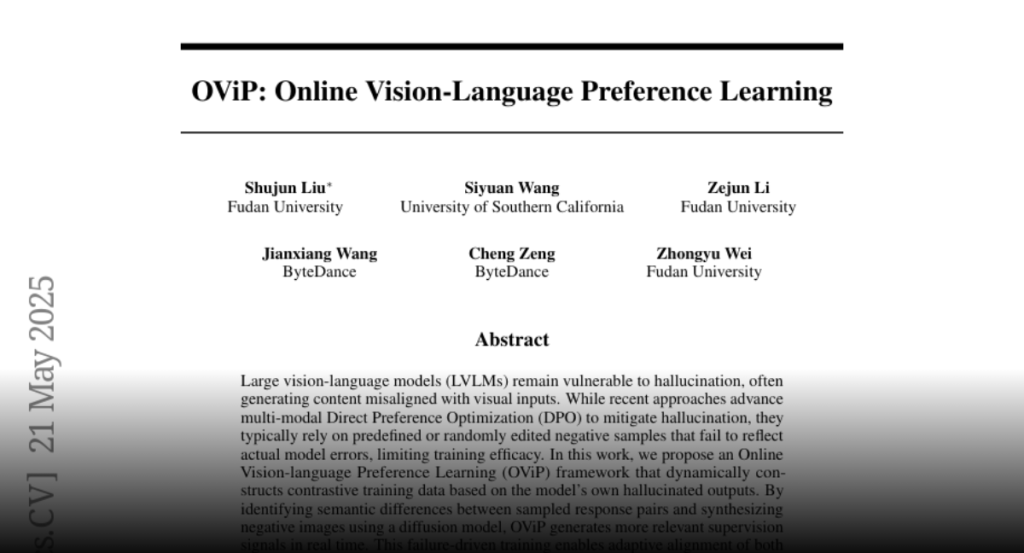Large vision-language models (LVLMs) remain vulnerable to hallucination, often generating content misaligned with visual inputs. While recent approaches advance multi-modal Direct Preference Optimization (DPO) to mitigate hallucination, they typically rely on predefined or randomly edited negative samples that fail to reflect actual model errors, limiting training efficacy. In this work, we propose an Online Vision-language Preference Learning (OViP) framework that dynamically constructs contrastive training data based on the model’s own hallucinated outputs. By identifying semantic differences between sampled response pairs and synthesizing negative images using a diffusion model, OViP generates more relevant supervision signals in real time. This failure-driven training enables adaptive alignment of both textual and visual preferences. Moreover, we refine existing evaluation protocols to better capture the trade-off between hallucination suppression and expressiveness. Experiments on hallucination and general benchmarks demonstrate that OViP effectively reduces hallucinations while preserving core multi-modal capabilities.

